



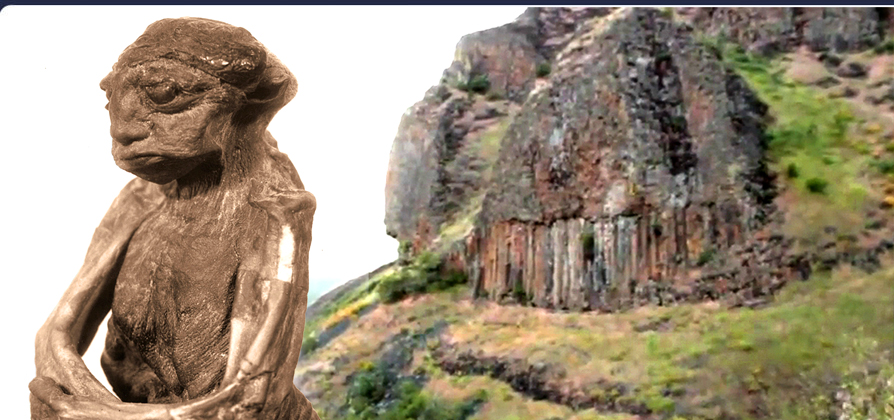
Resonance in the Geopolymer Stonework of Gnomes
Subterranean Complexes of Gnome Humanoids Were Cast in Geopolymer Basalt
by Alex Putney
July 9, 2017
The small, sealed cave from which the nimerigar mummy nicknamed Pedro (below) was removed in 1936 is located in the rugged peaks of the Pedro Mountains just southeast of Casper, Wyoming, where the tiny mummy was first presented for public viewing for a modest fee of 25 cents per person.
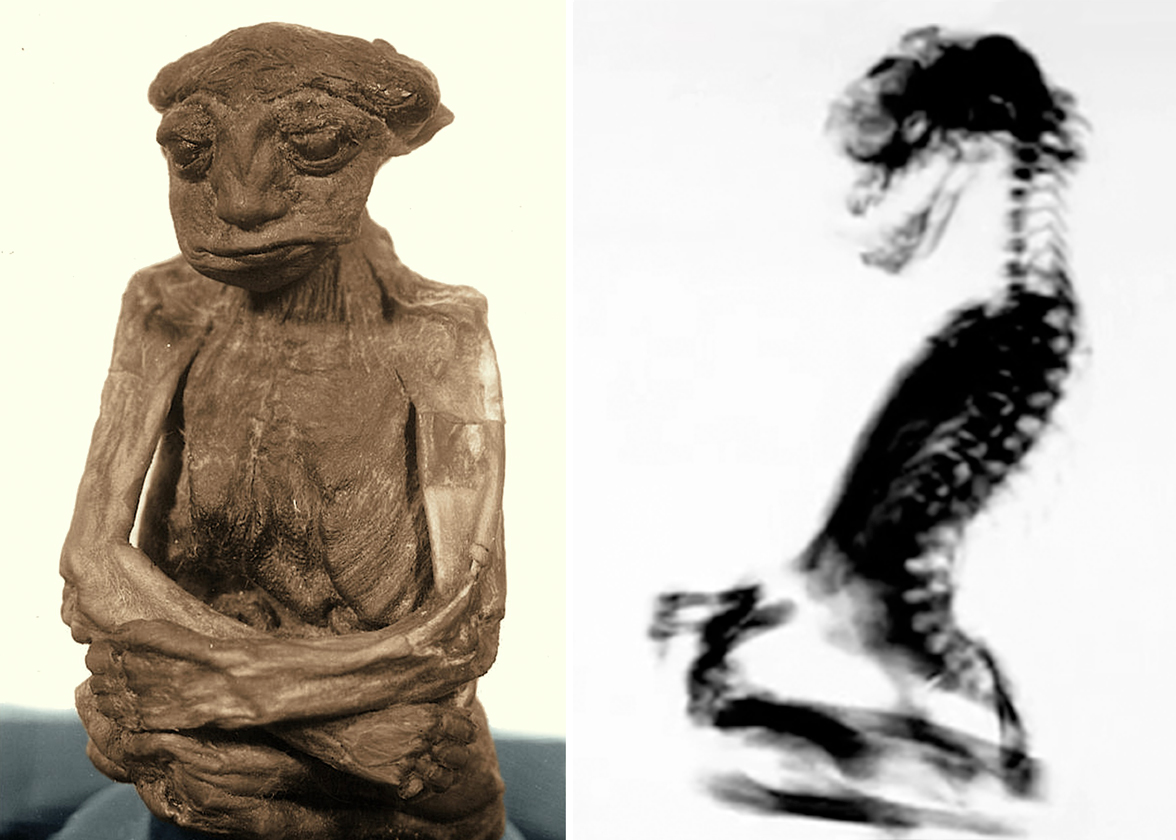
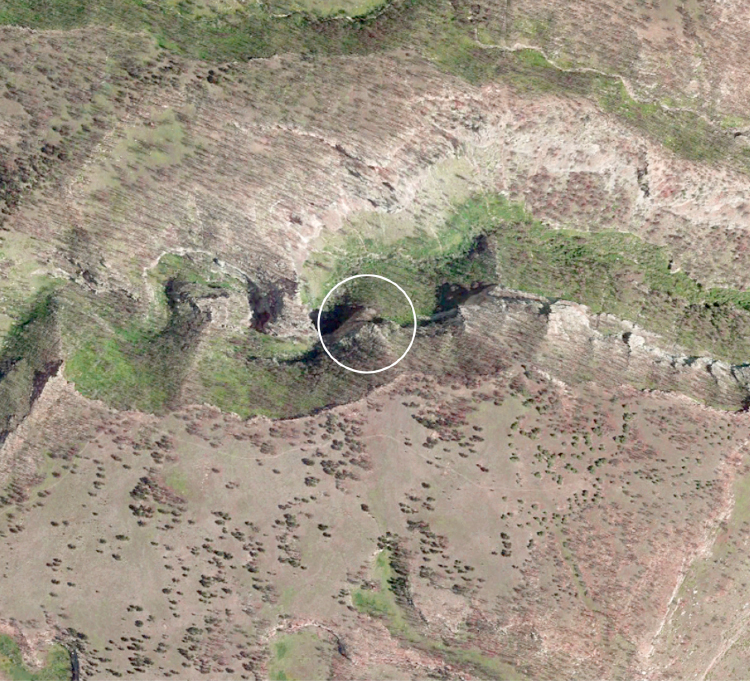
Sacred sites with geopolymer refaçading of natural cliffs cast by the nimerigar gnomes of the Pedro Mountains southeast of Casper, Wyoming (42.737°N, 106.183°W) are situated precisely 6,743 miles from the Great Pyramid of Giza, Egypt, comprising 27.09% of Earth's mean circumference of 24,892 miles.
This whole nomber percent distance relationship confirms these interconnected sacred sites as representing a subterranean complex built during the Paleolithic period in resonant geopositioning alignment with the global Atlantean pyramid network driven by the infrasonic, heartbeat-based frequency resonance transduced by the Great Pyramid during the extended period from 30,000 to 13,000 years ago.
Roaring ultra-low frequency pulsations transceived at this sophisticated underground gnome complex effectively synchronized the biorhythms of each inhabitant, enabling bioelectrical qi healing techniques that represent holistic cultural practices developed by the global Paleo-Sanskrit Atlantean civilization.
The unmistakable presence of gnome humanoid DNA within the genetic sequence of Melanesian peoples was revealed by new genetic analyses that screened out Neanderthal or Denisovan sequences to facilitate identification of previously unrecognized sequences from a third, distinct archaic hominin group (Vernot et al., 2016). It has been estimated that this third archaic hominin DNA sequence is most likely the remnant of hybridization patterns among various human haplogroups that occurred ~100,000 to 60,000 years ago.
Cross-referencing these findings with identical gene dynamics present in African and Indonesian 'pygmy' tribes will certainly reveal these additional haplogroups also display a quotient of gnome DNA sequences. Bolstering this gnome/human hybridization theory is recent, poor-quality video of a naked hobbit (i.e. gnome hybrid) filmed by surprised motocross riders on a well used mud trail in Aceh, Indonesia.
Even more promising are new advances in DNA recovery techniques that now allow collection and isolation of humanoid DNA from ancient dirt samples retrieved from cave excavations. This new technique requires only a spoonful of soil from ancient cave deposits to effectively detect the presence of humanoid DNA and assemble what sequence fragments were preserved over time. This represents a major game-changer.
While viable DNA samples cannot be taken from the mummified nimerigar gnomes of Wyoming's Pedro Mountains (as these specimens have also disappeared into government facilities), the latest advances in DNA collection from cave soil samples hold the clear promise of revealing the complete gnome genome. The only major hindrance to this unfolding process is the strict governmental control under which geneticists and their rapidly-developing equipment is now held. How long will this suppression continue?
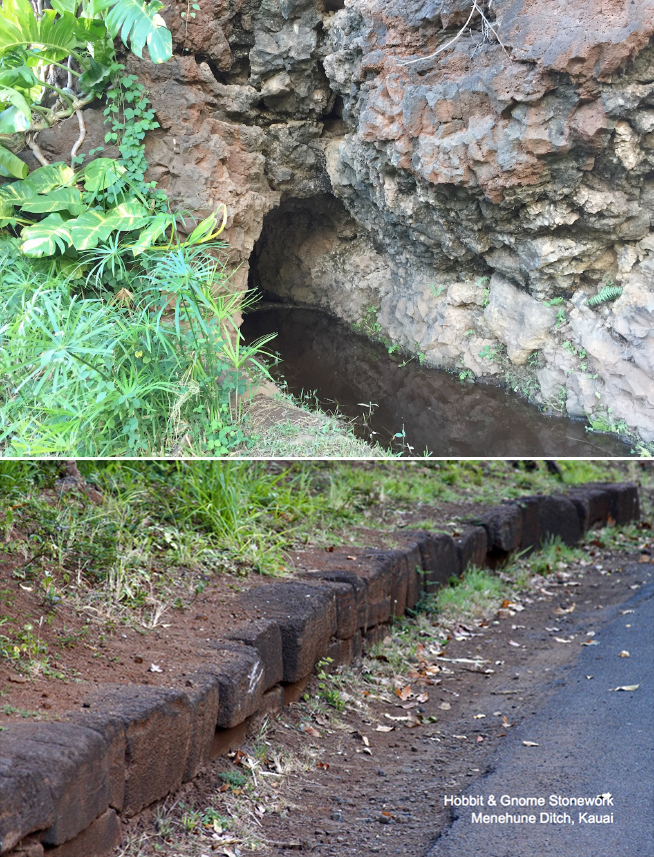
As with Native American tribes, countless generations of Native Hawaiians have related fascinating folklore tales concerning the existence of hobbits and gnomes among the islands, traditionally called Menehune. On the lushly vegetated island of Kauai, locals have uncovered an ancient network of tiny tunnels 2-3' in height at a site called Menehune Ditch (above). Soil samples from any dry areas that could possibly be accessed deeper in the Menehune caves may soon yield the full DNA sequence of these tiny gnome humanoids.
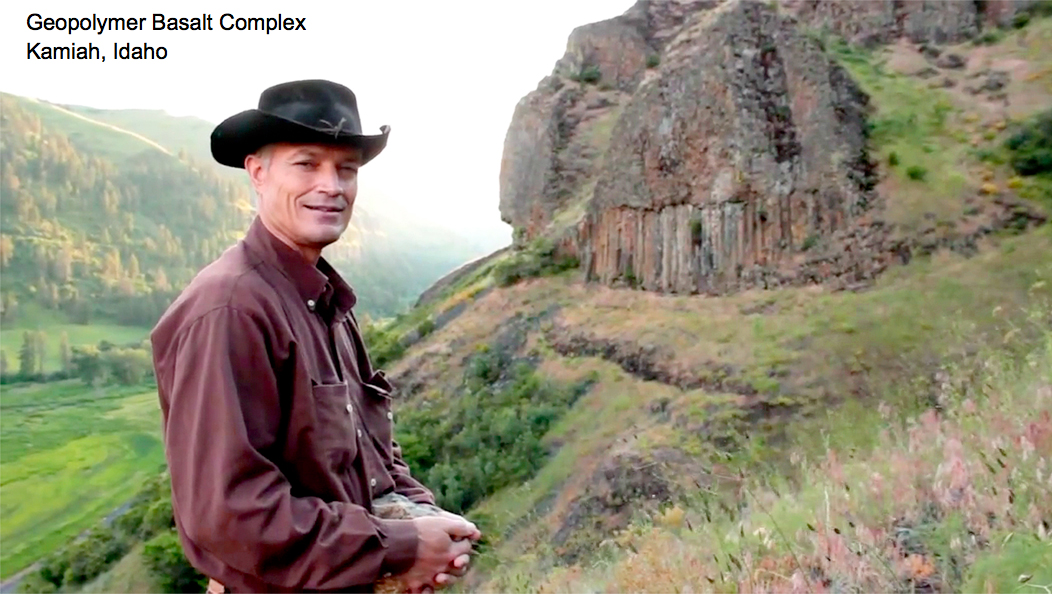
Another, far greater prospect for DNA collection from soil deposits in ancient gnome tunnels has emerged through recent investigations in North Idaho, undertaken by an interested resident of the town of Orofino. Videos of ancient tunnel systems in Idaho published in 2015 by William Shira (above) present tiny circular cave entrances that lead straight into the basalt rock face. Despite the fragmented façading, what first appear to be natural columnar basalt cliffs just west of Kamiah, Idaho may, in fact, be the ancient handiwork of a troglodytic race of gnomes that remains well hidden below ground to this day.
Multiple cliff faces presenting circular tunnel entrances of ~10-14" in diameter have been investigated along this broad basalt outcropping that bear all the hallmarks of having been artificially refaçaded using the same Atlantean geopolymer construction technologies only recently recognized at the Visoko Pyramids of Bosnia, at the Padang Pyramid of Indonesia and at Nan Madol Temple, in Micronesia (Putney & Benoit, 2017).
These ancient, miniscule tunnel entrances that could only have been used by the Nimerigar gnomes are situated high above State Highway 162, also known as Lawyer Creek Road, just west of the Lawyer Creek Bridge that connects to 7 Mile Road leading eastward into the quiet town of Kamiah.
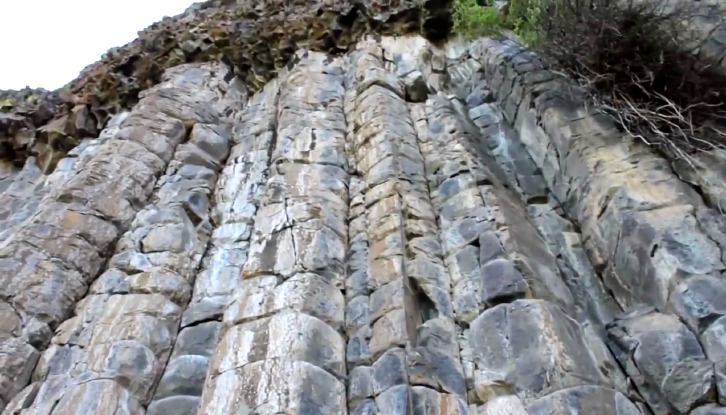
A 20-foot-tall sheer cliff face extends along the entire 80-foot-wide south-facing section of a massive natural basalt outcropping (above). Regular vertical stacking of the symmetrical blocks forming the cliff confirm its artificial origin as reconstituted stones made from a basic geopolymer slurry composed of finely ground basalt powder, pre-baked and finely ground kaolinitic clay, ashes of ferns, reeds or bulrushes and water.
The most intriguing features visible near ground level at the base of the basalt cliff are a few small, round tunnel openings that immediately drew the researchers' attention. The well aged and highly fragmented refaçading of the cliff has exposed narrow seams between the reconstituted basalt columns, allowing one to peer into a small transverse tunnel, as recounted by William Shira:
So, I find this [small, circular tunnel] pretty fascinating so I thought I'd like to show it. We're going to [shoot some video]... in this hole that we found at the base of this cliff, and we've got a light in there so we can see... Now, just look at the lining of that and how perfectly rounded it is, and then it opens up inside... It's pretty fascinating.
Now, we found holes just like this at the base of a cliff, and one of them went in 5 feet and went straight down... perfectly round, and then went down into and open chamber 30 feet below. And then we found another one that went in... 30 to 40 feet and... [then] goes straight down [so] we can't see [and] we can't get down it --it's too small. But, [the depth of the small, round shaft is great enough that] we can't see an end to it.
So, [it's] pretty fascinating. It would be really fascinating --because this looks like it has a cave-in or something at the base there, [but] we're pretty sure it probably goes back in quite a ways too-- it would be interesting to get one of those cameras on a tractor, and... see really where these things went... The one that we found that goes in 40 feet... is perfectly round, all the way back --all 40 feet... It's just perfectly round, lined with rocks and all smooth.
Shira's co-discovery of multiple tunnel entrances at the bottom of columnar cliffs clustered together, displaying the same circular cross-section and level entryway leading to a narrow vertical shaft which required all gnomes entering the subterranean complex to shimmy down with care before reaching the larger chambers that extend far below. This special tunnel entryway security feature would be effective against animal and human intruders alike, leaving just enough wiggle room for the passage of gnomes.
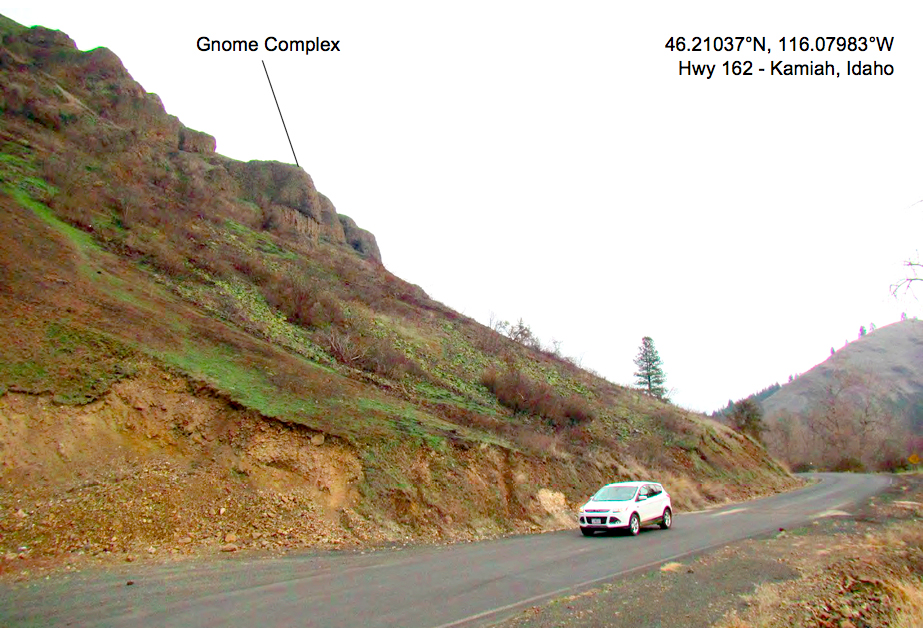
Viewed from the highway below, the artificial basalt columns are clearly visible; overhung by treacherously sharp krags covering this ancient gnome complex (above). The close proximity of a noisy highway to this geopolymer temple site may not necessarily prohibit nocturnal movements of gnomes throughout this area.
While the most fascinating aspect of this discovery is the geometric tunnel system, the overlaying stacks of segmented columns that comprise the massive basalt cliff face also belie their natural origin. Many thousands of years of weather erosion has removed much of the flat exterior surfacing of the columns to expose their many unnatural features. Naturally formed columnar basalts do not display the regular segmentation that is clearly visible throughout these high basalt cliffs standing above Lawyer Creek.
Despite having the original appearance of seemingly natural basalt columns, its eroded surfaces reveal the entire formation has been cast as stacks of relatively small blocks that interlock with one another to form a fractal mosaic reminiscent of Atlantean and Lemurian pavements that geologists like to call 'tessellated'.
Shira points out clear seams in the stonework that delineate each block comprising the exterior of the massive stacked construction, which were carefully cast one atop the other to reinforce the cliff face itself:
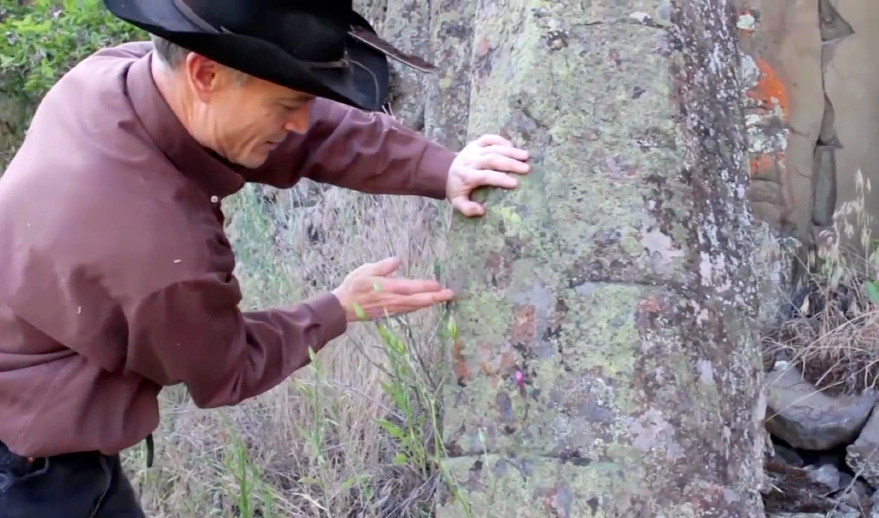
Look in here... And I know they've got all these geological terms to describe this, but see the seam right here? ... And then here's a seam right here. Down there [on the slope below the cliff] we just found ones that looked pretty much like this... These [columns]... when they break apart, they actually have a little dip in it like a bowl [on the bottom one]... and then... on the one up above it... [we see] more of a smooth [convex form]... like the bottom of a bowl [that would]... fit right into [the block below]...
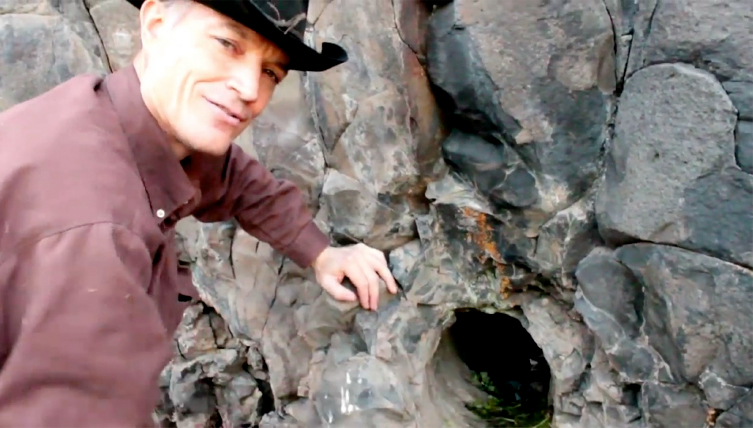
So you can see how this rock [face] comes down, and look at the seams in it. It comes down and you would think that would be solid. If we come down all the way, then here, it's broken away. And then, inside of there is a tunnel, pretty much perfectly round... Now, we found other tunnels [in the same vicinity] that have gone [directly] in [the mountain for] 30 feet... similar to this. This one just [runs] kind of along the base [of the cliff] but is about the same size as we have found them that have gone in about 30', straight into the cliff.
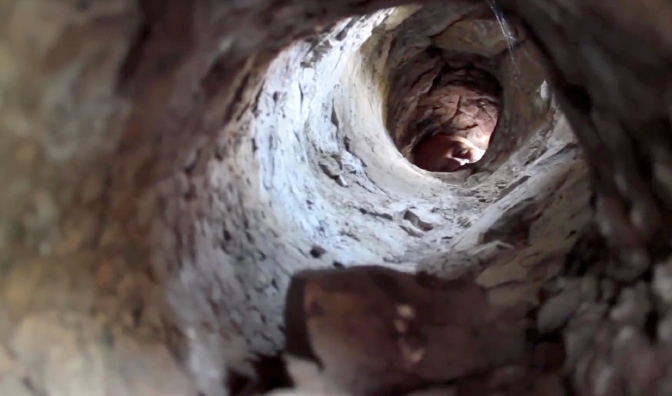
Soil samples excavated from deep within these miniscule tunnel entrances, preferably obtained by ROV from deeper chambers within the tunnel system, may soon reveal the cryptogenetics of this elusive gnome humanoid species. Investigating beyond the genetic identity of these gnomes, their remnant architectural achievements confirm the detailed trance statements of world-renowned psychic medium Edgar Cayce:
Q: Please give a few details regarding the physiognomy, habits, customs and costumes of the people of Atlantis...
A: These took on many sizes as to stature, from that as may be called the midget to the giants --for there were giants in the earth in those days, men as tall as (what would be termed today) ten to twelve feet in stature, and in proportion --well proportioned throughout. (Reading 364-11)
This explanation by the Source channeled through Cayce emphasized "many sizes" to reference the Baal hybridization of human haplogroups with both giants and gnomes, creating 'half-giants' and 'half-gnomes'.
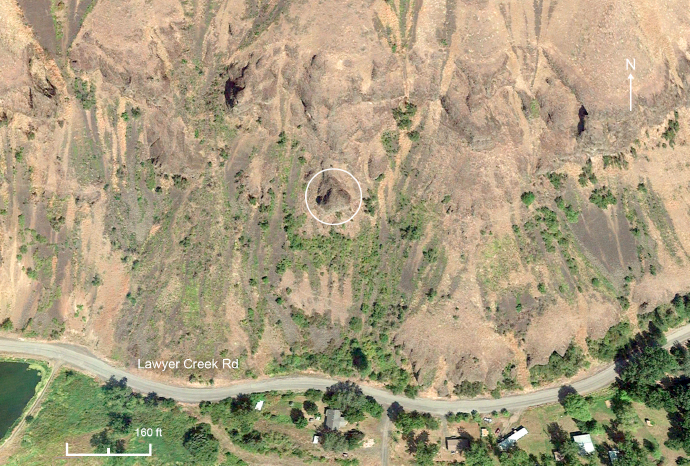
The ancient gnome complex ~8 miles west of Kamiah, Idaho (46.21037°N, 116.07983°W --circled on the satellite image above) is situated 6,802 miles from the Great Pyramid of Giza, Egypt. This distance comprises 27.33% of Earth's mean circumference distance of 24,892 miles, corresponding to standing wave nodes focused by the Orion Pyramids. Artificial basalts of the gnome complex near Kamiah followed acquisition of special Atlantean geopolymer fabrication techniques enabling the manufacture of synthetic basalt 'firestone' invented by Atlantean leader Ajax of Ode ~30,000 years ago (Readings 440-5, 470-22).
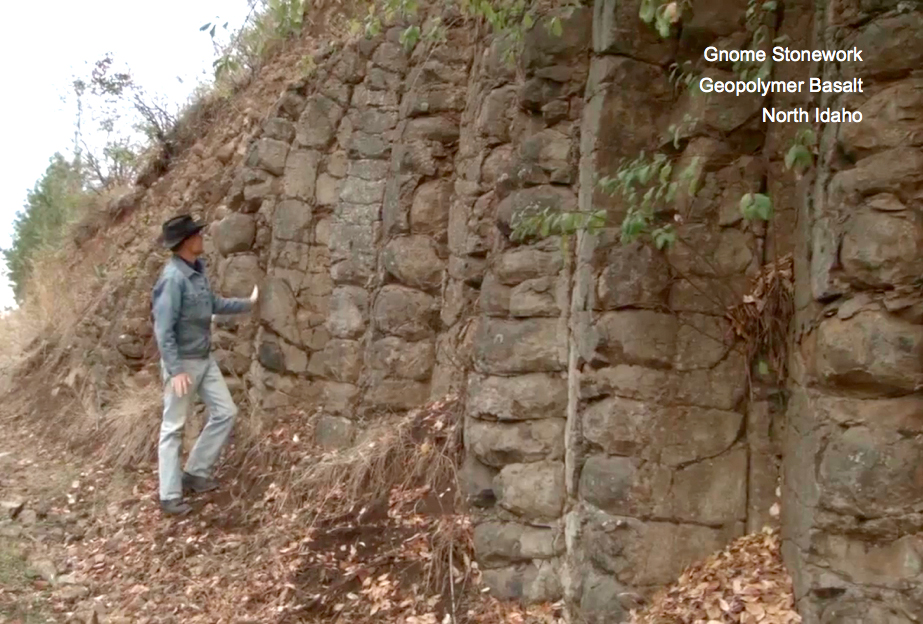
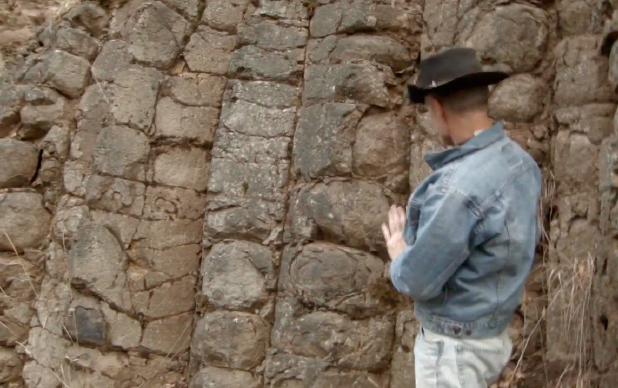
Geomagnetic resonance alignments used by the Atlanteans for positioning their psychoacoustic pyramids and temples have also been identified among the Ohum Pyramid Complex of On, located in present-day La Maná, Ecuador and extending south through the rural community of La Envidia. Like the Nimerigar gnomes of present-day Idaho and Wyoming, the Ohum people of Paleolithic South America established technology-sharing accords with the Atlanteans whereby they received the knowledge of firestone chemistry and the quantum fractal spherical mandala maps for building new temples in Magnetic Resonance alignment.
Copyright 2017 Alexander R. Putney